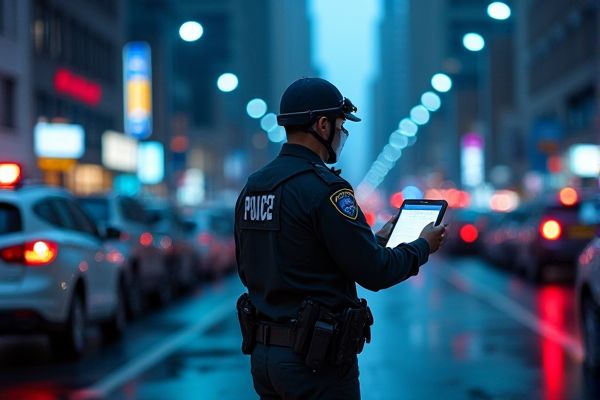
AI enhances public safety and policing by analyzing vast amounts of data to identify patterns related to criminal activity. Predictive policing tools leverage historical crime data to deploy resources more effectively, potentially reducing response times. Facial recognition technology assists law enforcement in identifying suspects, aiding in faster resolutions to cases. AI-driven surveillance systems improve monitoring capabilities, ensuring the safety of communities while balancing privacy concerns.
AI usage in public safety and policing
Predictive policing algorithms
Predictive policing algorithms can analyze crime data to forecast potential criminal activity, offering law enforcement agencies a strategic advantage. For instance, the Los Angeles Police Department has implemented such technology to identify high-risk areas. By leveraging historical crime patterns, these algorithms enhance resource allocation, potentially improving response times. The chance of successfully preventing crime may increase, leading to safer communities.
Real-time surveillance systems
AI-enhanced real-time surveillance systems can greatly improve public safety and policing by enabling quicker response times to incidents. For instance, cities like Los Angeles are adopting these technologies to analyze video feeds and detect unusual activities. Increased efficiency in monitoring can lead to a reduction in crime rates and enhanced community safety. These systems also hold the potential for reallocating resources more effectively within police departments.
Crime pattern analysis
AI can enhance crime pattern analysis by providing predictive insights based on historical data. For example, law enforcement agencies like the New York Police Department utilize AI tools to identify potential crime hotspots. This technology can improve resource allocation, leading to more efficient patrols and a possible reduction in crime rates. The chance of creating safer communities increases as data-driven strategies evolve in public safety initiatives.
Automated emergency response
The implementation of AI in public safety can enhance automated emergency response systems, enabling quicker reaction times in critical situations. For instance, an AI-driven platform could analyze real-time data to allocate resources efficiently, assisting police departments like the LAPD. This technology can potentially reduce human error and improve decision-making during emergencies. Overall, the integration of AI may lead to a significant increase in public safety and operational efficiency.
Facial recognition technology
Facial recognition technology can enhance public safety by improving the efficiency of suspect identification. For instance, police departments using tools like Clearview AI may expedite investigations, potentially reducing crime rates. The accuracy of these systems could lead to quicker arrests and resolutions in various cases. However, there are also concerns about privacy and the potential for misuse, highlighting the need for regulations as this technology evolves.
AI-driven threat detection
AI-driven threat detection can enhance public safety by analyzing large volumes of data in real-time. Tools like predictive policing software may help law enforcement agencies identify crime hotspots before they escalate. The chance of a quicker response to potential threats increases, allowing officers to allocate resources more effectively. This technology could potentially reduce crime rates and improve community trust in institutions such as the police.
Resource allocation optimization
AI can enhance resource allocation in public safety and policing by analyzing crime patterns and predicting high-risk areas. For example, cities like Chicago use AI tools to allocate police patrols more effectively based on predictive analytics. This allows for more proactive law enforcement and potentially reduces response times. The possibility of improved safety outcomes through efficient deployment of resources presents a significant advantage for law enforcement agencies.
Community policing enhancement
AI can analyze crime patterns and predict potential hotspots, enhancing community policing efforts. For instance, departments like the Los Angeles Police Department have started using AI-driven analytics to allocate resources more efficiently. This technology offers the chance to improve response times and engage more effectively with community members. Implementing AI in this context can lead to better trust and cooperation between police and residents.
Natural language processing for reporting
AI has the potential to enhance public safety and policing through advanced data analysis and predictive modeling. Natural language processing can streamline reporting by automatically extracting relevant information from incident reports, allowing officers to focus on critical tasks. For instance, the integration of AI tools in precincts, such as the Chicago Police Department, could improve response times and resource allocation. These technologies may offer significant advantages in crime prevention and community relations if implemented thoughtfully.
Cybersecurity and digital forensics
AI can enhance public safety and policing by analyzing large datasets for crime pattern recognition and predictive policing. In cybersecurity, AI algorithms can identify vulnerabilities and detect unusual activity in real-time, potentially preventing data breaches. Digital forensics can benefit from AI through automated analysis of digital evidence, speeding up investigations. Institutions like law enforcement agencies may find these applications advantageous for improving their operational efficiency and response times.
 techknowy.com
techknowy.com